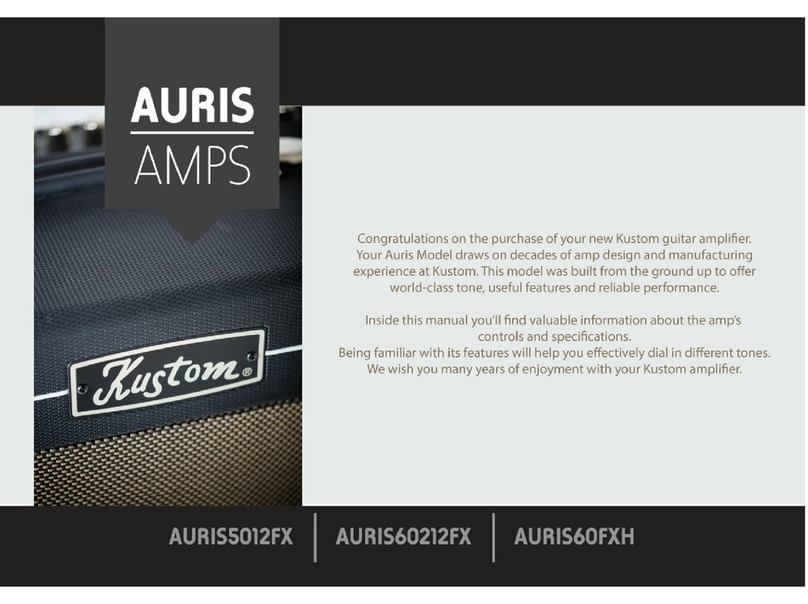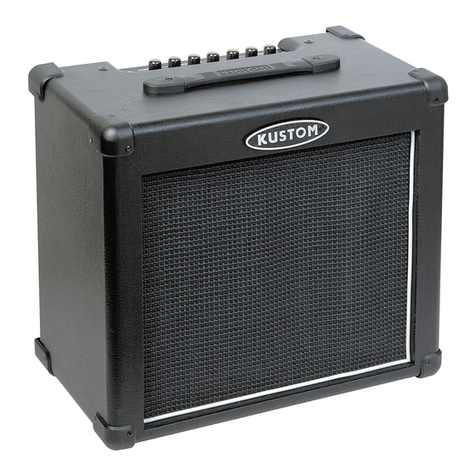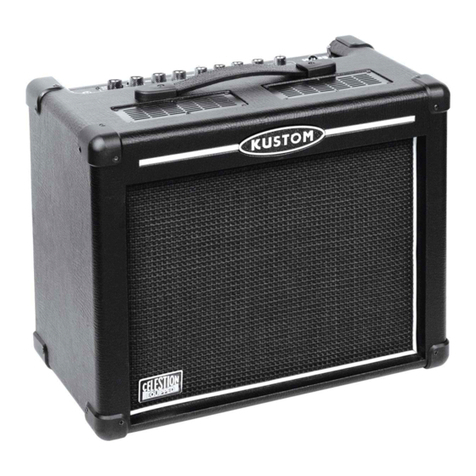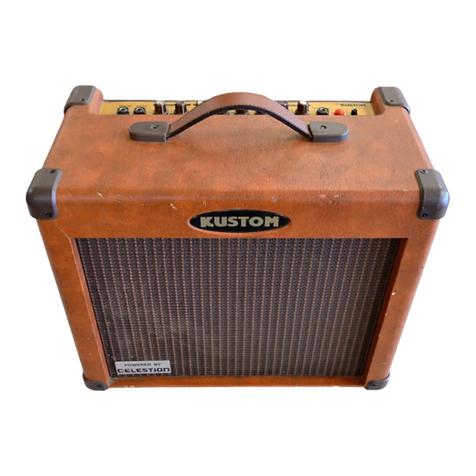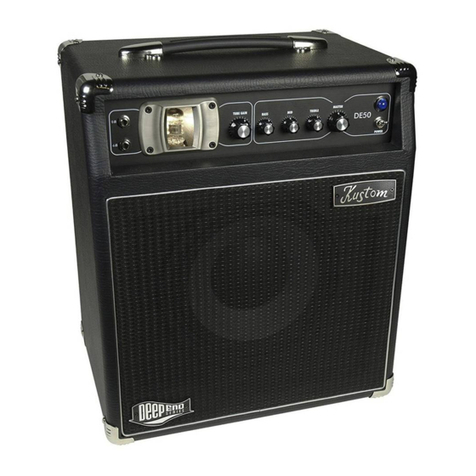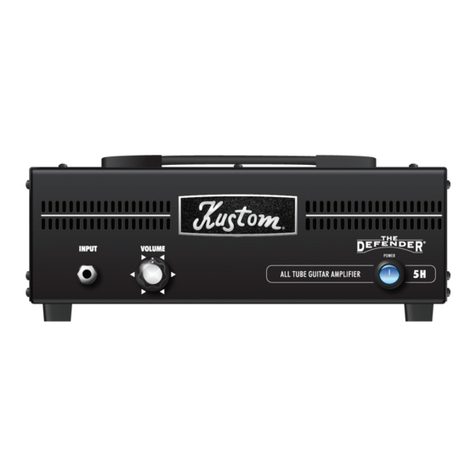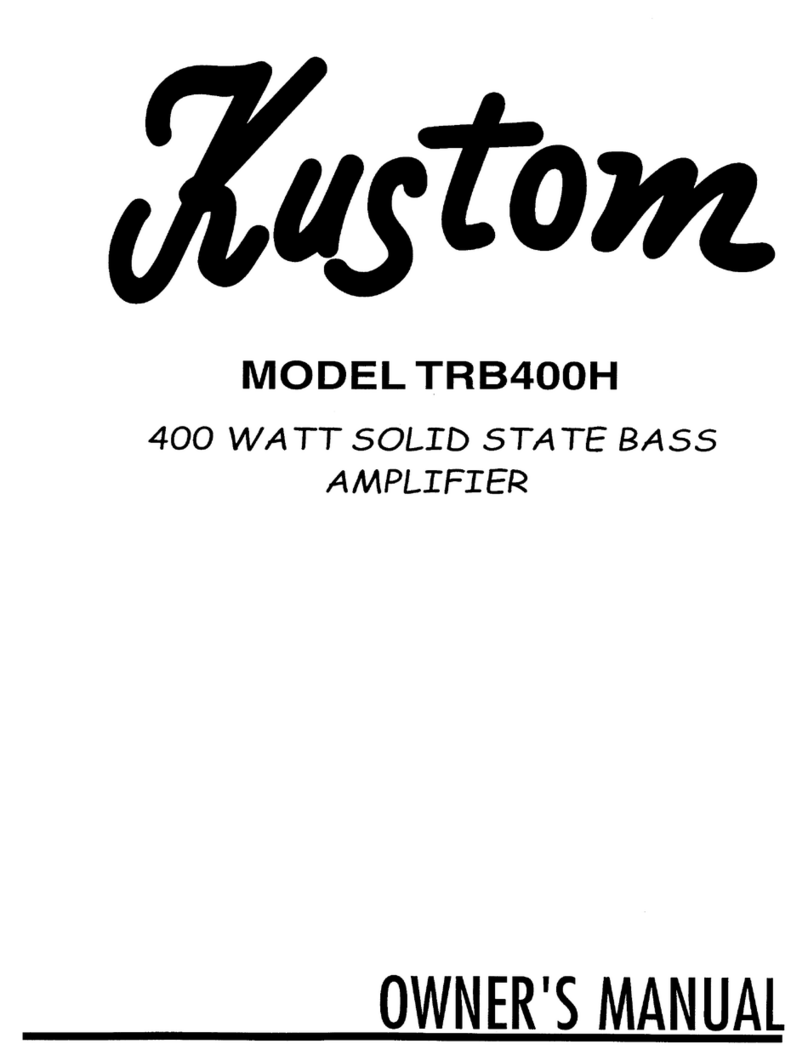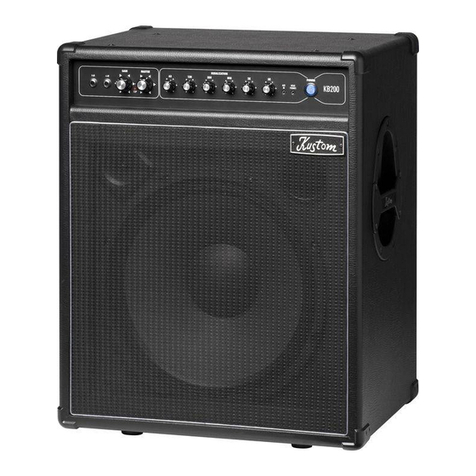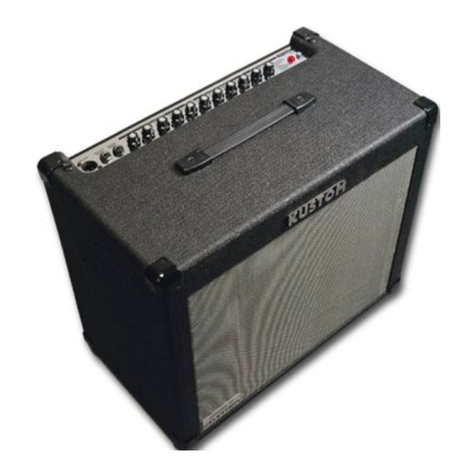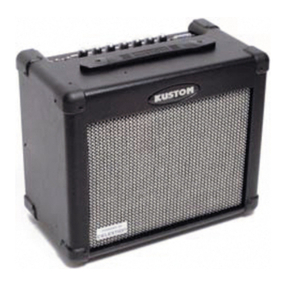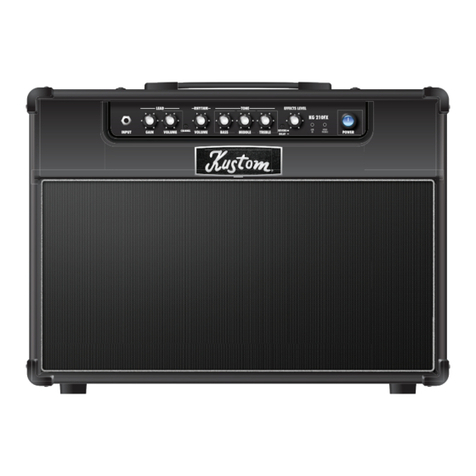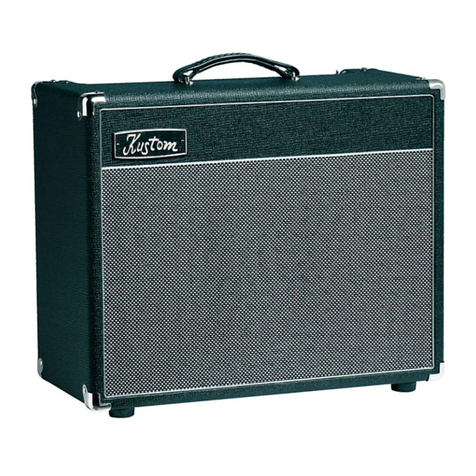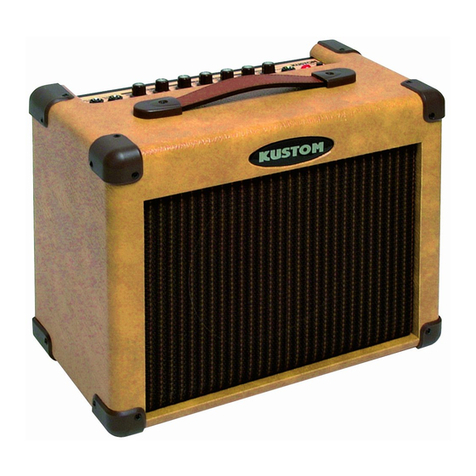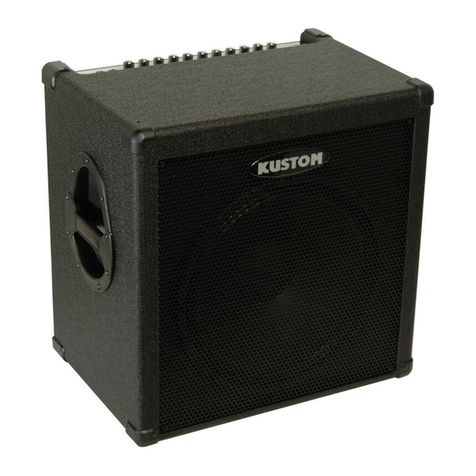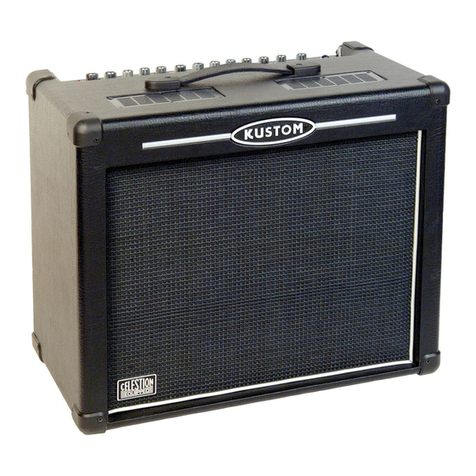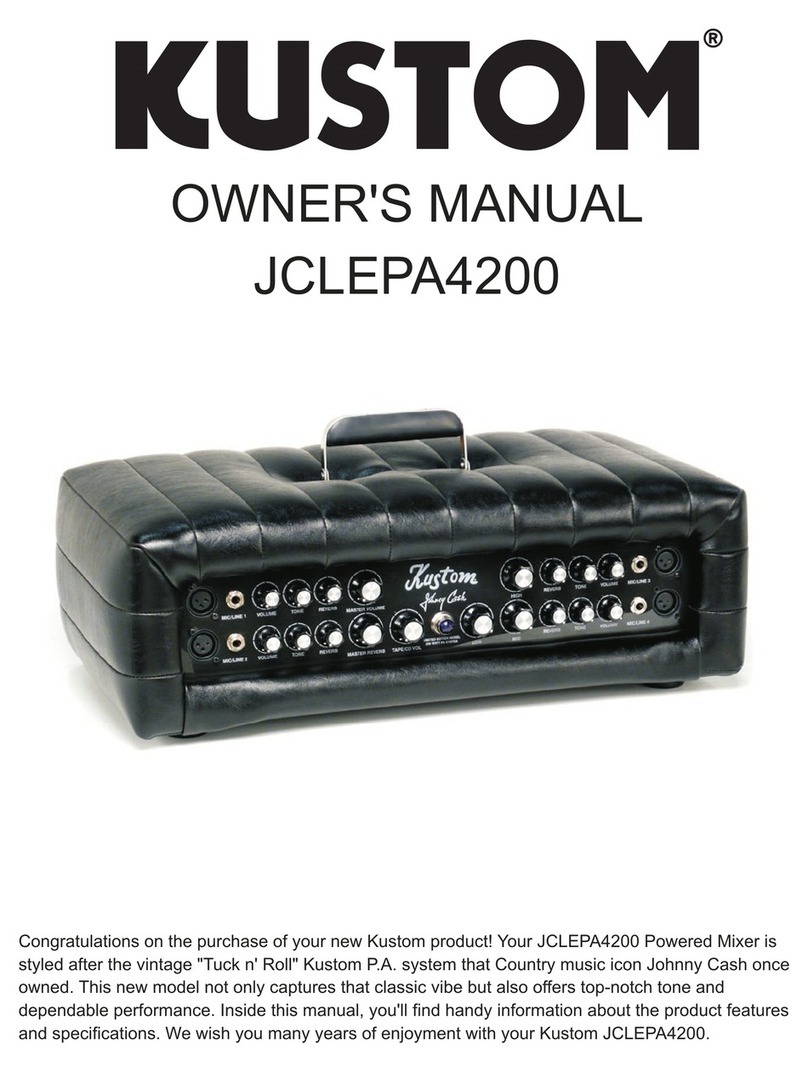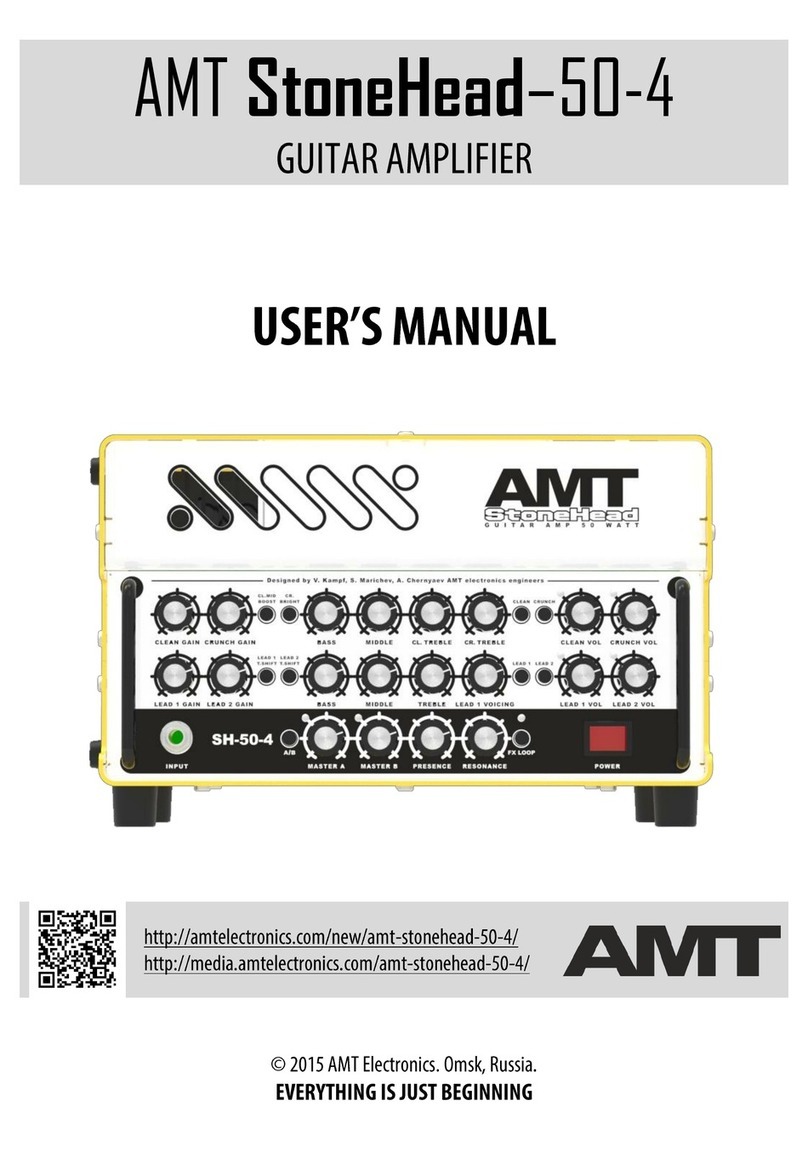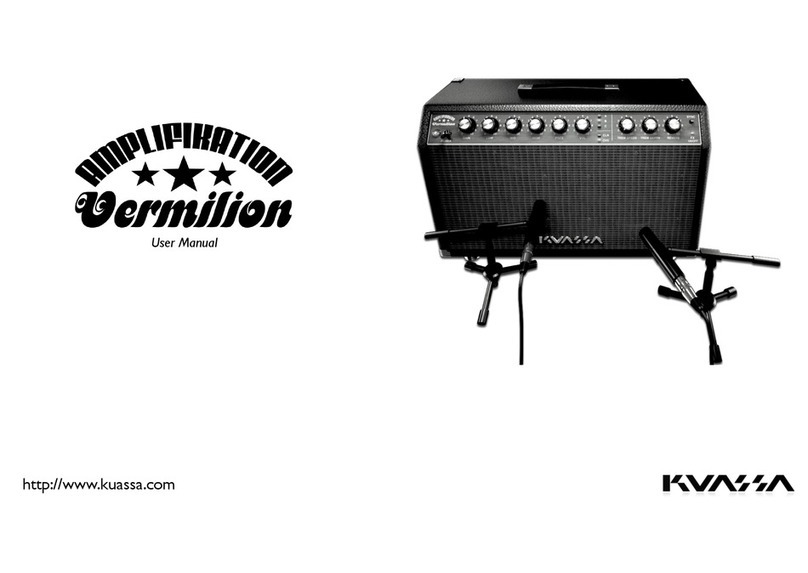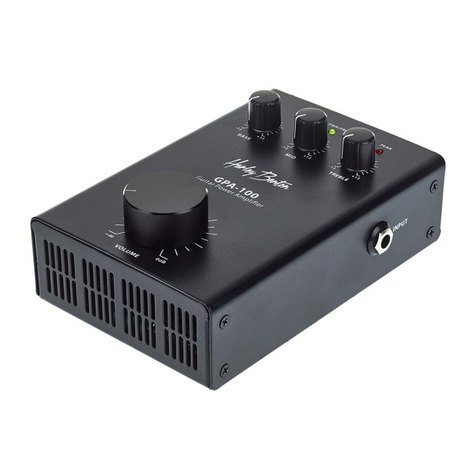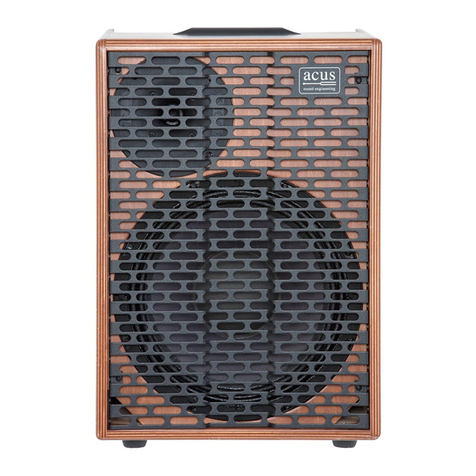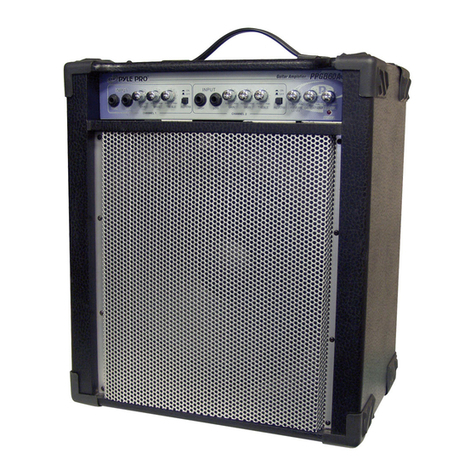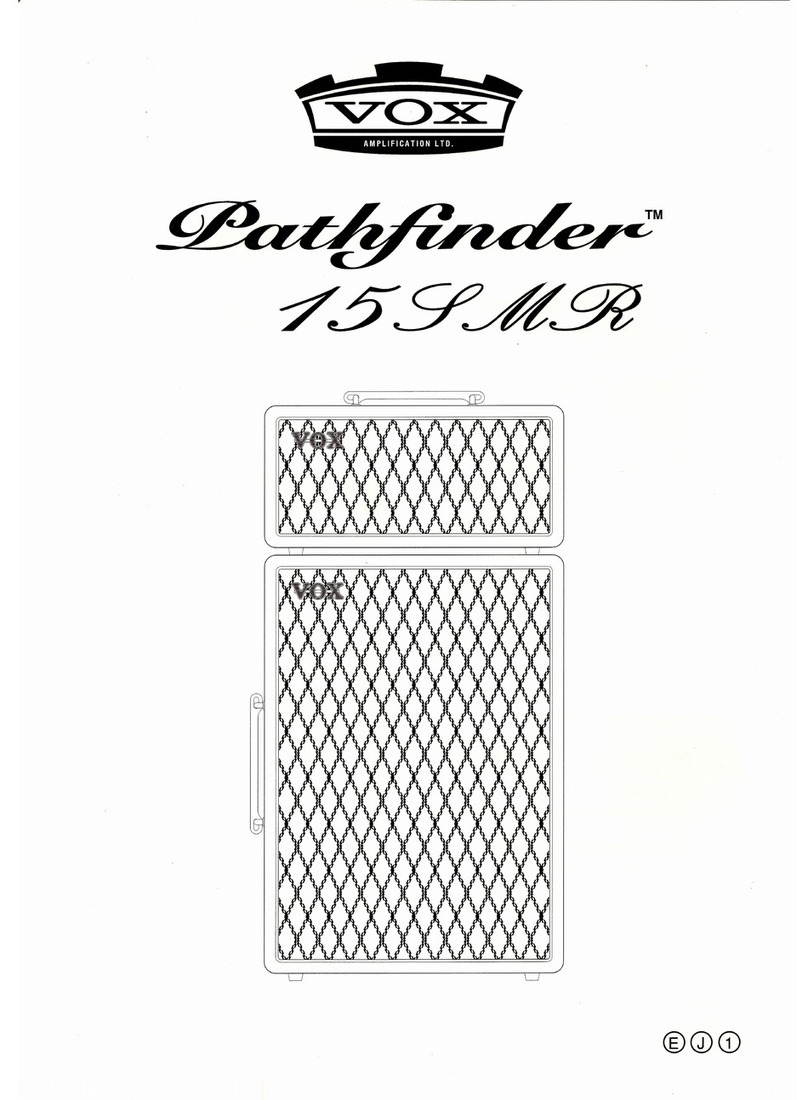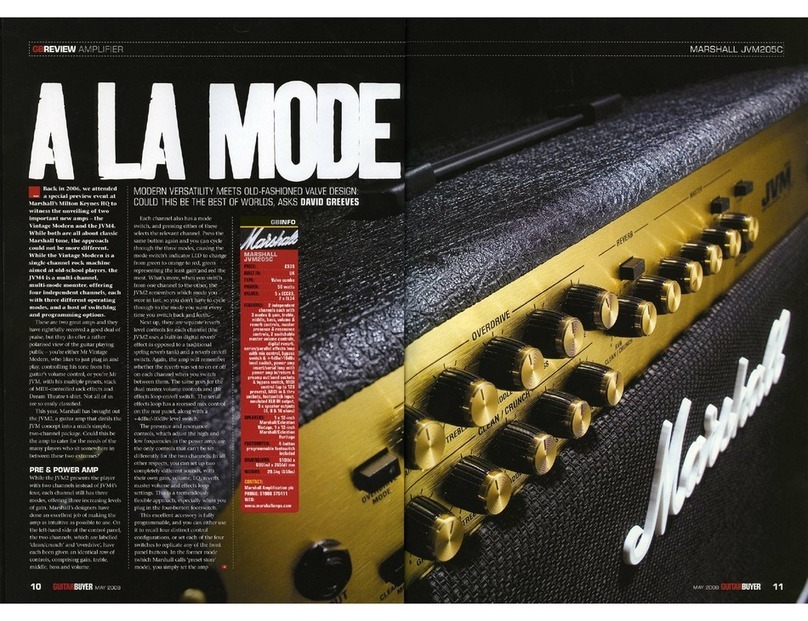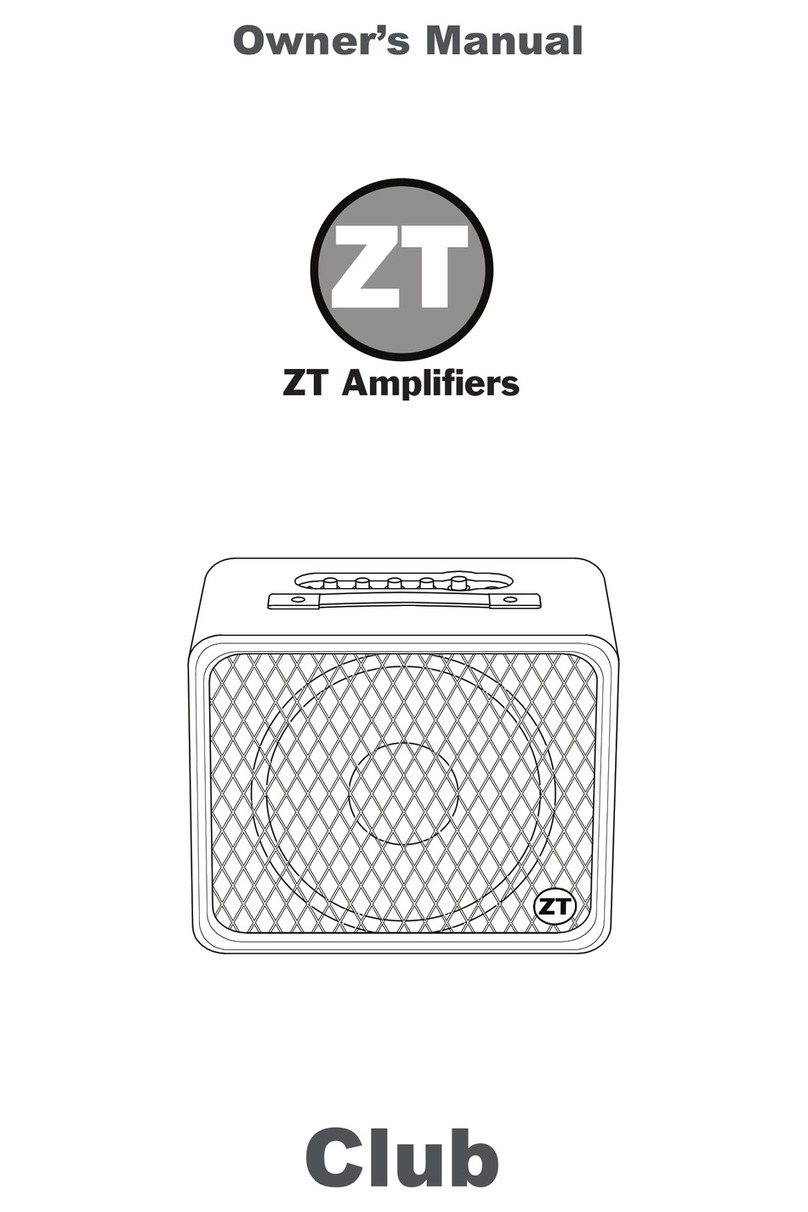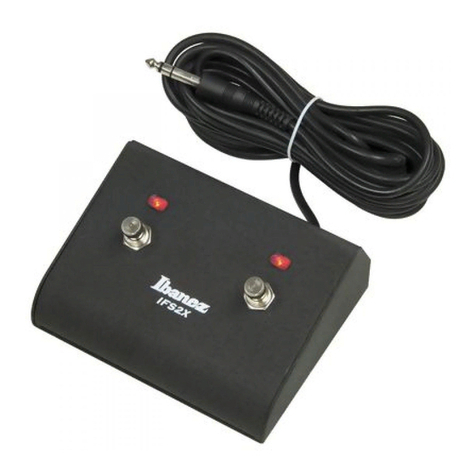
1. Input 1: ¼-inch input jack that is intended for electric guitars but will accept other instruments as well. This input
provides the highest gain. It is considered to be the “normal” input.
2. Input 2: This ¼-inch input jack provides 6 dB lower gain so it will allow for a cleaner sound. It can also be useful when
using pedals in front of the amp since it provides more headroom. If guitars are plugged into both inputs, they will mix
together and both will be 6 dB lower in gain.
3. Gain (Lead): Adjust this control clockwise to increase the amount of distortion. Use in its lower ranges to produce less
distorted tones. As you increase the amount of gain, the tonality will shift from a classic rock-type sound to a heavier,
modern tone.
4. Volume (Lead): This controls the overall volume level of the Lead channel only.
5. Channel: This switch selects between the Lead and Rhythm channels.
6. Volume (Rhythm): This controls the overall volume level of the Rhythm channel only.
7. Bass: This controls the bass frequencies for both channels. For a “tighter” bass response, set the Bass control in its
lower ranges.
8. Middle: This controls the middle frequencies for both channels. For a heavier, more distorted sound, set the Middle
control in its lower ranges. For a vintage-style, cleaner tone, set the Middle higher.
9. Treble: This controls the treble frequencies for both channels. Set this control in its higher ranges to brighten up dark-
sounding guitars or, alternately, in its lower ranges to reduce brightness.
10. Reverb/Delay: This switch selects between Delay or Reverb effects. Press switch in to choose Delay.
11. Effects Level: This control increases the effect signal level and mixes it with the instrument’s signal. Turn this control
clockwise to add the desired level of effects.
12. Chorus On: By pressing in, this switch activates a lush Chorus effect.
13. Aux In: This is a 3-conductor, 1/8-inch, stereo jack that allows playback from a Compact Disc, MP3 player or other
audio device. The overall volume level will be determined by the audio device, so start with lower volume levels and
increase as needed.
14. Headphones: This is a 3-conductor, 1/8-inch input jack intended for headphone use. The amplier’s internal speaker
is disconnected when this jack is used.
15. Power Switch: This dual-function component is both an On/Off power switch and a status indicator light. When
illuminated, it shows that your amplier is ready to be played. To turn amplier on, press switch upward. To turn amp off,
press switch downward.
1345789
kustom.com
610 11 12 13 14 15
2
KG100FX112 Control Panel
